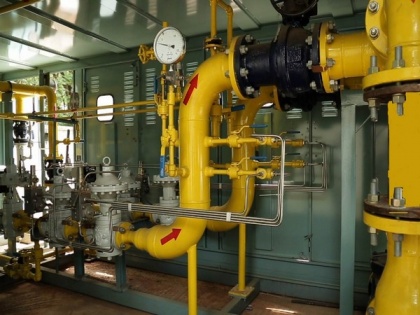Upstream gas producers continue to bleed as domestic prices remain low: ICRA
By ANI | Published: April 2, 2021 05:23 PM2021-04-02T17:23:43+5:302021-04-02T21:45:16+5:30
Gas production remains a loss-making proposition for most fields among Indian upstream producers despite some decline in oil field services and equipment costs, according to investment information firm ICRA.

Upstream gas producers continue to bleed as domestic prices remain low: ICRA
Gas production remains a loss-making proposition for most fields among Indian upstream producers despite some decline in oil field services and equipment costs, according to investment information firm ICRA.
However, the depreciation of Indian rupee against US dollar will aid realisations of gas producers but only to an extent.
The domestic gas price notified at 1.79 dollars per metric million British thermal unit (mmbtu) for the period H1 FY22 remains the lowest since the institution of modified Rangarajan formula.
While this is unfavourable for domestic producers, it will benefit gas consumers. The consumers will also benefit in the long run from expectations of continued supply overhang.
"Going forward, the supply glut is expected to keep prices of domestic gas low in the near to medium term, leading to poor returns even as domestic gas producers like Oil and Natural Gas Corporation and Reliance and BP Joint Venture ramp up gas production significantly," said Sabyasachi Majumdar, Senior Vice-President and Group Head for Corporate Sector Ratings at ICRA.
"The absence of a floor and sustained low prices as has been seen in the past few years post implementation of the modified Rangarajan formula make exploration and production unviable even for benign geologies."
Accordingly, low natural gas prices remain negative for the upstream sector, adversely impacting revenues, profitability and cash accruals and the incumbents have petitioned the government to provide a floor price for gas prices.
Spot LNG prices had breached 30 dollars per mmbtu in February due to increase in oil prices, unplanned outages at export facilities in several countries, multiple cold waves, high shipping rates and delays in the Panama Canal.
Though spot prices have come down to 6 to 6.5 dollars per mmbtu levels, low inventory levels as winter ends are set to support prices as well as demand as North Asia and Europe look to refill gas storage.
Nevertheless, the supply overhang remains with about 37.6 million tonnes per annum liquefaction capacity added in 2019 and 27.8 MTPA in 2020 besides which capacity additions till 2025 will be in excess of incremental demand which will weigh on gas prices.
Additionally, the ceiling on price for gas produced from deep water, ultra deepwater, high temperature and high-pressure fields has also been announced at 3.62 dollars mmbtu for the period H1 FY22.
This is 10.8 per cent lower than the price ceiling of 4.06 dollars mmbtu for H2 FY21 which will dampen the development of such projects.
( With inputs from ANI )
Disclaimer: This post has been auto-published from an agency feed without any modifications to the text and has not been reviewed by an editor
Open in app